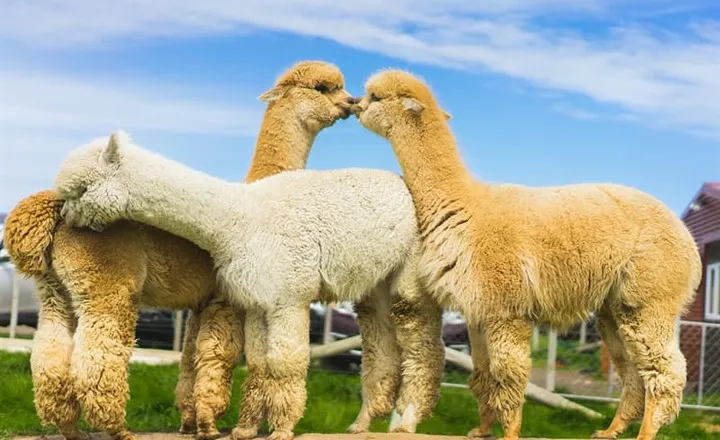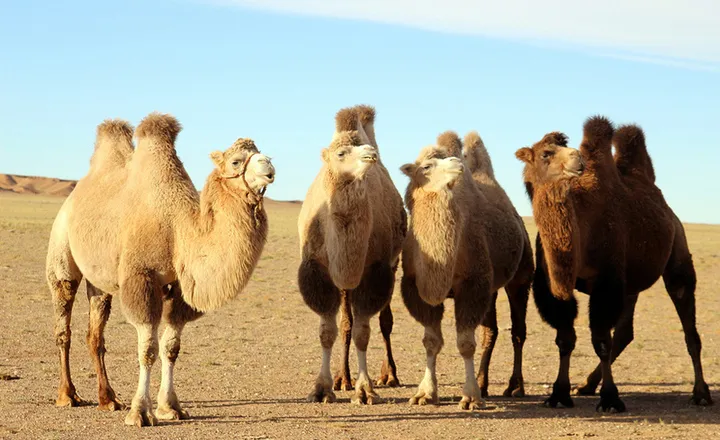Camels and llamas may seem like distant cousins in the animal kingdom, but their close genetic relationship is indeed a fascinating aspect of their shared evolutionary history. One main question is Are Camels and Llamas Related?
Both belong to the Camelidae family, showcasing similar physical characteristics such as long necks, sturdy bodies, and remarkable adaptability to harsh environments.
Despite inhabiting different continents camels in Asia and Africa, llamas in South America – their common ancestry trace back to a common ancestor millions of years ago.
Are Camels and Llamas Related?
Camels and llamas are indeed closely related as they both belong to the Camelidae family, along with other animals like alpacas and guanacos. With not being the same species, these two animals share many similarities in appearance and biology.
Both camels and llamas are classified as camelids, members of the same order Artiodactyla which includes hoofed animals. While they may have differences in size and color, their genetic relationship is evident through their shared kingdom, phylum, class, and order.
There have been attempts to create hybrid species between camels and llamas through artificial insemination. One such hybrid animal known as Cama was produced with the intention of combining the wool of llamas with the temperament of camels.
This experiment resulted in a creature named Rama that displayed unexpected moodiness. With this interesting development, it is clear that camels and llamas share a close genetic relationship within the Camelidae family.
Evolutionary History of Llamas and Camels
Llamas and camels belong to the same family, Camelidae, and share a common evolutionary history.
Llama Origin
These fascinating creatures with a rich history, have a unique origin story that dates back millions of years. Descended from their wild cousins in the Great Plains of North America, llamas eventually found their way to South America around 3 million years ago.
The first domestication of llamas took place around 4,500BC, marking the beginning of their close relationship with humans. Despite being referred to as South American camels, llamas do not inhabit deserts like traditional camels but instead thrive in mountainous regions, particularly in the Andes mountains.
The similarities between llamas and Guanaco, another member of the camelid family and considered the ancestor of llamas, are striking.
DNA analysis confirms that llamas are descendants of Guanaco and share many physical characteristics with this wild relative.
Llamas, along with alpacas, vicuñas, and Guanacos, collectively known as lamoids, lack the characteristic humps of traditional camels and possess smaller sizes and slender bodies.
Camel Origin
Modern camels are believed to be descendants of the extinct Paracamelus, with true camels like the Bactrian and Dromedary camel being prominent members of this family. The new age camels, including llamas, alpacas, guanacos, and vicuñas, showcase the diversity within this group.
Fossil records reveal that ancient camels varied greatly in size and shape, with some as small as rabbits and others towering at 15 feet tall. These camels migrated to different parts of the world, spreading across Asia, Africa, and South America.
While the South American camels did not evolve humps like their counterparts, studying the head of a llama can offer insights into similarities with true camels.

Camels play crucial roles for desert communities in transportation and carrying loads, while llamas are valued for their wool and meat production.
Why Do Llamas Look Like Camels?
Llamas and camels share a common ancestor, which is why they have some physical similarities. Both animals have adapted to harsh environments, which is why they are able to survive for long periods without water.
Their ability to store fat in their humps or bodies also contributes to their resilience in challenging conditions. Both llamas and camels are domesticated animals that have been used by humans for transportation and carrying goods for centuries.
While llamas may look like smaller versions of camels, there are some differences between the two species as well.
They have a more slender build and lack the distinctive hump that camels have. They are also known for their soft woolly coats, which make them popular in the textile industry. With these differences, it is fascinating to see how evolution has shaped these two unique creatures with similar survival strategies.
How are Camels and Llamas Different From Each Other?
Camels and llamas are both members of the camel family, but they have several key differences. Camels are large animals known as the ships of the desert due to their ability to thrive in arid regions like deserts.
They have a distinctive hump on their back, which stores fat for energy during long periods without food or water. Camels are found across African, Asian, and Australian deserts, with some wild populations and feral camels in Australia.

Llamas are smaller animals without the characteristic camel hump. They are domesticated and primarily found in South America, particularly in the Andes mountains and highlands. Llamas are raised for their prized wool, which is used for various textiles.
Their adaptability to mountainous terrains makes them well-suited for these regions compared to camels, which prefer flat desert landscapes.
Conclusion
The debate over the relationship between camels and llamas has been ongoing for many years, with conflicting evidence and opinions from different experts.
While they both belong to the Camelidae family and share certain physical characteristics, genetic studies suggest that they diverged from a common ancestor millions of years ago.
With this separation, both animals have adapted to thrive in their respective environments, showcasing remarkable survival skills. Further research is necessary to fully understand the evolutionary history and genetic connections between camels and llamas.
FAQs
Are giraffes and camels related?
Giraffes and camels are not closely related in terms of evolutionary history. Giraffes belong to the family Giraffidae, while camels belong to the family Camelidae.
Can a llama be a pet?
Yes, llamas can make great pets for the right owner. They are social animals that enjoy companionship and can bond with their human caregivers.
What is a female llama called?
A female llama is called a dam. Dams are typically the mothers of baby llamas, known as crias.
